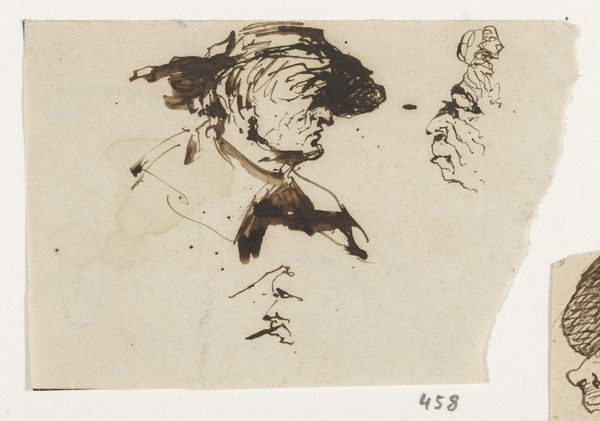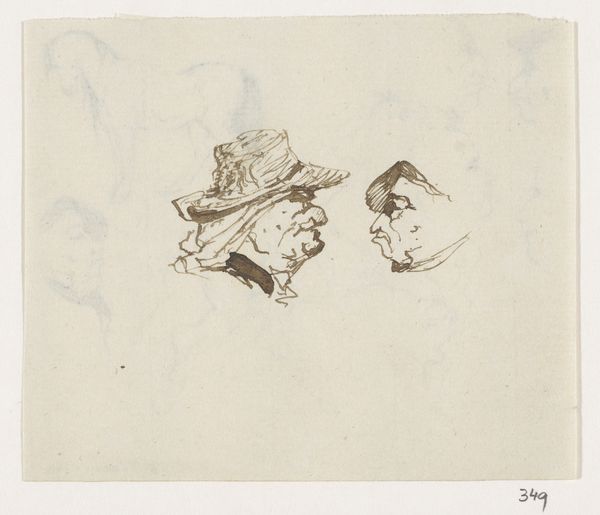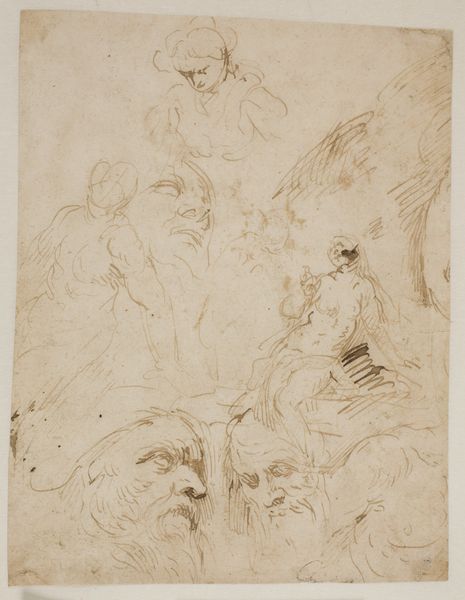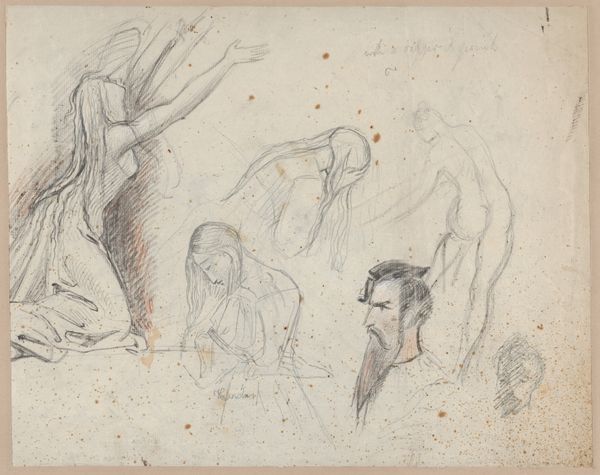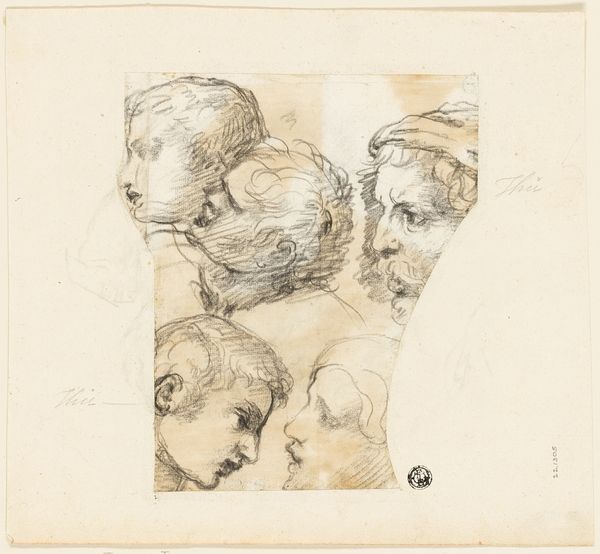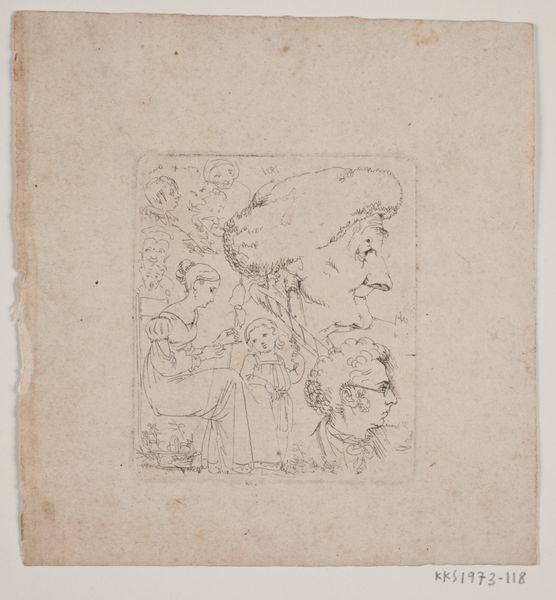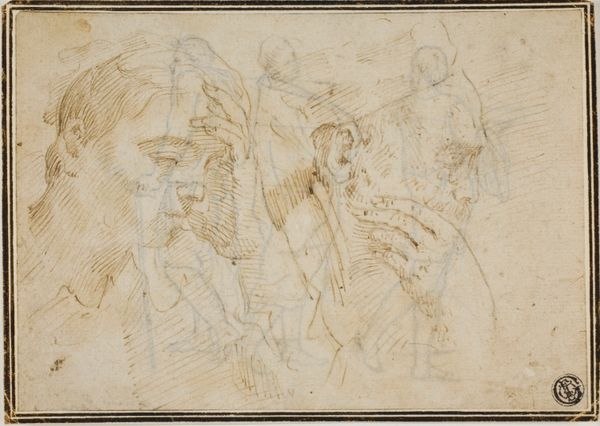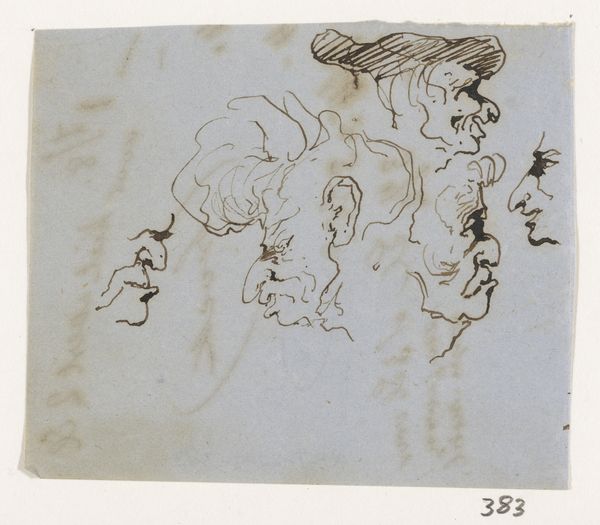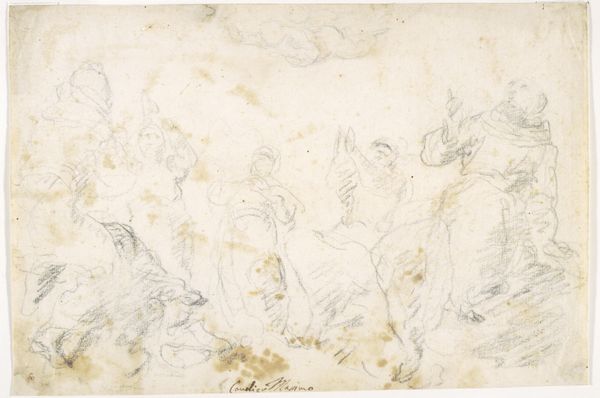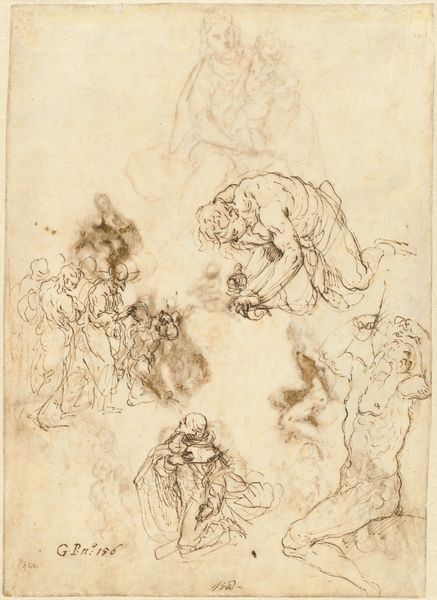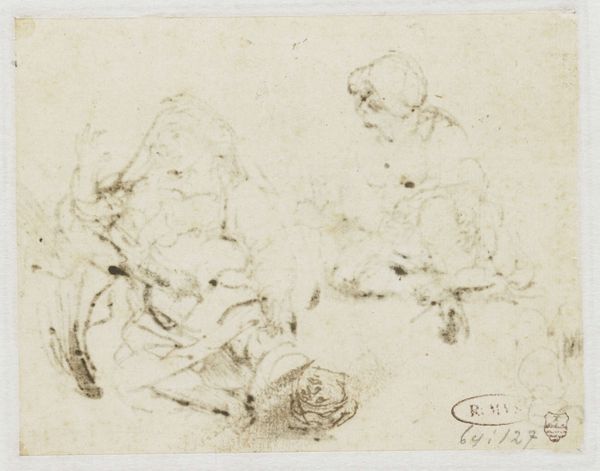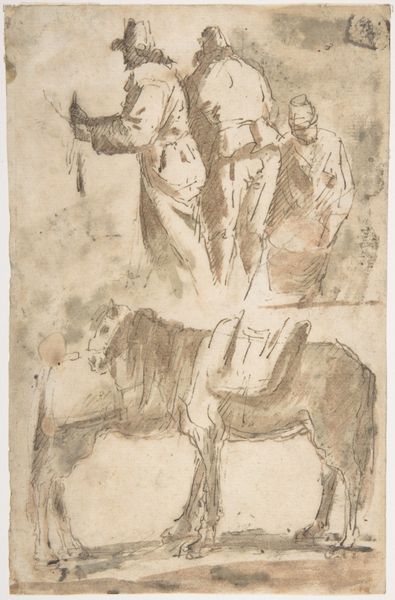
drawing, paper, ink
#
portrait
#
drawing
#
pencil sketch
#
figuration
#
paper
#
ink
#
romanticism
Dimensions: height 125 mm, width 126 mm
Copyright: Rijks Museum: Open Domain
Curator: Here we have "Koppen en rennende haas" created between 1835 and 1845, a work on paper in ink and pencil by Johannes Tavenraat, currently held in the Rijksmuseum. Editor: My first thought is a feeling of…unease. The drawing feels ghostly. The pale wash, the way the figures seem to emerge from the paper rather than sit upon it... there's a vulnerability to it. Curator: Vulnerability indeed, it's likely that this work functioned as a preliminary study, judging by the visible pen and ink hatchwork. Consider Tavenraat’s economic circumstances at the time. He was a drawing instructor, often working in series to explore themes, a crucial detail for understanding the artistic labor at play here. The very materials used - ink and pencil, easily accessible and affordable - suggest a practicality driven by market forces. Editor: The imagery reinforces that vulnerability, doesn’t it? We have studies of faces and then, juxtaposed, a hare suspended in the air. Hares have often symbolized vulnerability and fear, so I see this as a study of mortality. What relationship do you see between these faces and the vulnerable hare? Curator: That interpretation's interesting given prevailing cultural views toward game animals, particularly hare. Hunting connected wealthy citizens to feudal traditions and was a marker of social status during that era. By rendering this particular hare in an incomplete fashion Tavenraat subtly resisted idealized representations of power, choosing instead to underscore the class-based labor surrounding artistic creation, which itself held implications. Editor: So, a critique through both subject matter and material choice. It's a reminder that even preparatory sketches, often overlooked, are artifacts laden with social meaning. Curator: Precisely. And let's consider paper-making during the period – the type of paper stock used. It could unveil specific manufacturing practices. Editor: Ultimately, the piece feels emotionally complex because these faces seem caught between different worlds or existences, as the image itself occupies that realm between planning and creation. Curator: Looking at the composition in totality makes the Romantic style pop out more because it underscores feelings rather than just appearances. Editor: So, from a study of faces and a hare, we gain a perspective into economic factors and production that give way into Romantic undertones.
Comments
No comments
Be the first to comment and join the conversation on the ultimate creative platform.
